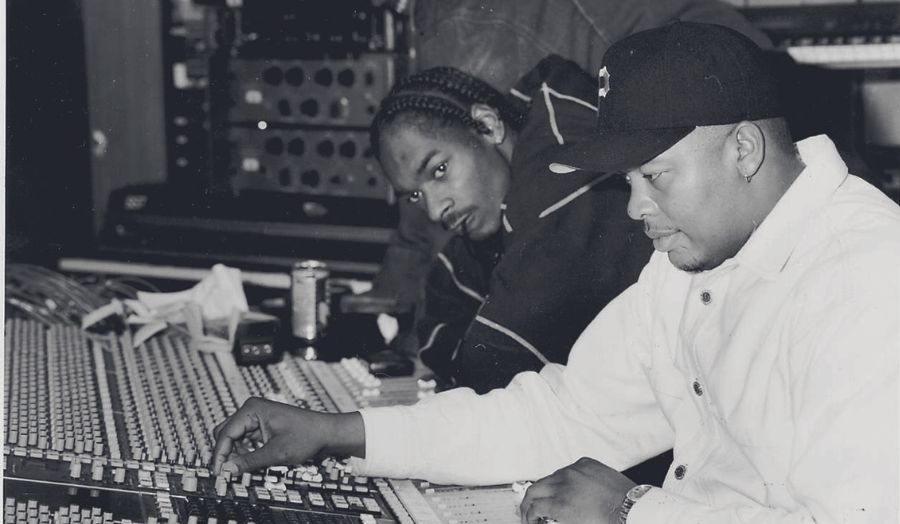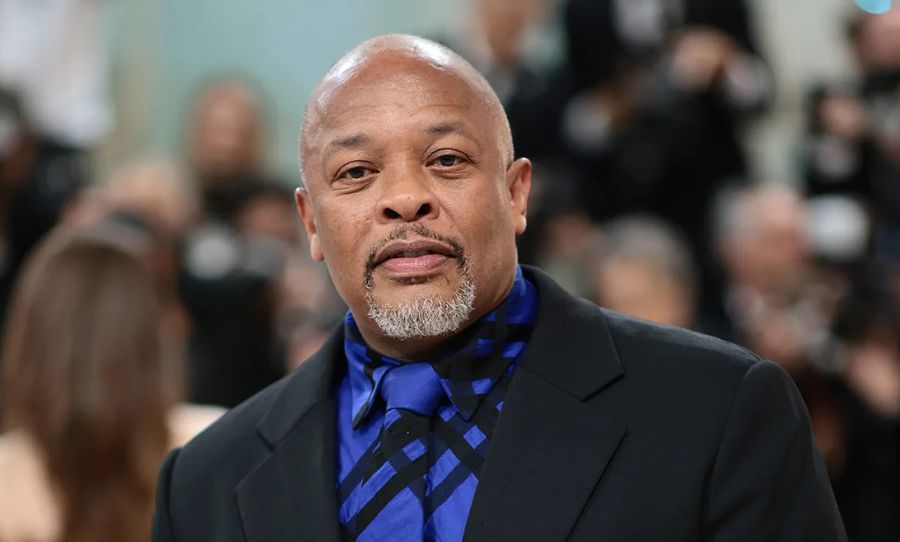Dr. Dre’s classic solo album “The Chronic” is back, and celebrating its 30th anniversary on Feb. 1 with a return to streaming and a re-release.
Dr. Dre changed the game with his classic album, “The Chronic”. With its smooth beats and funky flavour, “The Chronic” flipped the script on hip-hop and took it to new atmospheric heights… and by new heights, we mean to the moon and back.
Dr. Dre’s signature G-funk sound, is marked by the rolling basslines, thick beats, and soulful backing vocals. This style dominated the early 90s and beyond, shaping the entire hip-hop landscape and influencing countless artists.
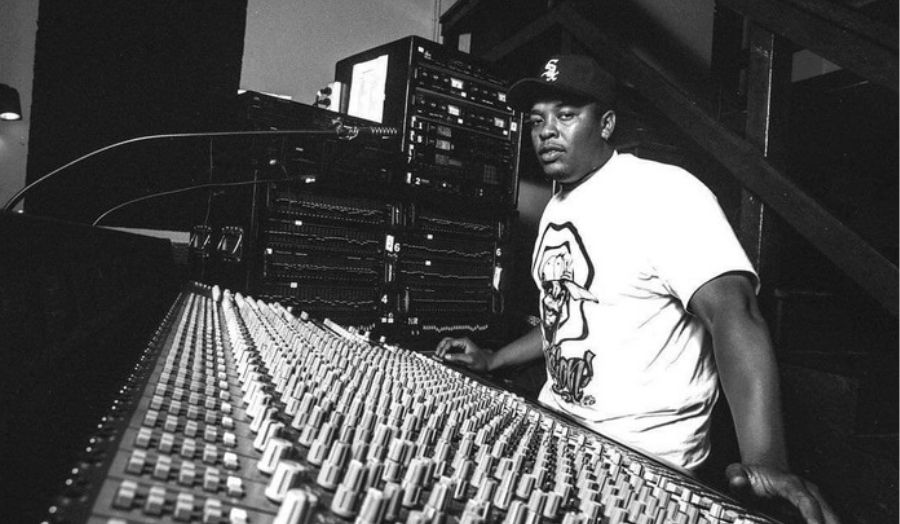
Dr. Dre’s innovation in the studio, coupled with his sharp ear for beats and talent for bringing the best out of other rappers, made The Chronic a game-changing album that set a new standard for hip-hop production. From Snoop Dogg’s laconic flow to the inventive rhymes of fellow N.W.A members, The Chronic showcased a formidable talent roster, making it clear that Dr. Dre was not just a great producer, but a shrewd A&R and visionary as well.
The album’s impact on hip-hop is off the charts and still felt to this day, like a good vintage wine. Decades later, it’s still as fresh as ever.For Dr. Dre, “The Chronic” is the cherry on top of his legendary career, solidifying his spot among the greats of hip-hop and forever altering the genre’s trajectory.
After a lull on streaming services, “The Chronic” is back and ready to impact generations once again. With a re-release by Interscope Records, the album, which ushered in a new era of West Coast rap, is accompanied by a special merchandise collection. Dr. Dre calls it a “full circle moment,” while Interscope’s Steve Berman and John Janick tout it as one of the most iconic and groundbreaking recordings of all time.
Let’s take a deep dive into the depths of hip-hop history, and get up close and personal with “The Chronic” and with the videos freshly released via Dr Dre’s official YouTube account below.
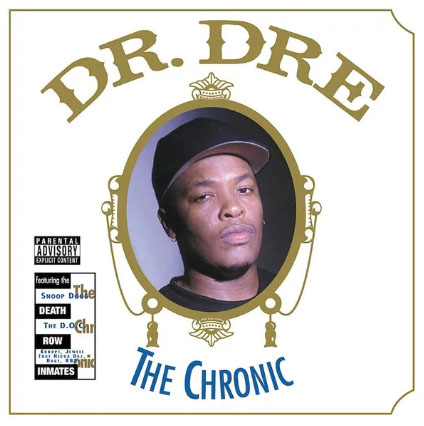
Arrival
Dr. Dre’s seminal debut studio album was unleashed on the world on December 15, 1992, via Death Row Records/Interscope.
“The Chronic” marked Dr. Dre’s initial foray as a solo artist, after he split from N.W.A and exited Ruthless Records amidst financial friction. The album, a veritable tour de force, saw Dre taking aim at his former label and its head honcho, Eazy-E. But, it’s not all diss tracks, as the LP also spotlighted the rising talent of Snoop Dogg, who would use the platform provided by “The Chronic” to launch his own successful solo career.
Title and Cover
The moniker itself is a nod to the good stuff, you know, top-shelf weed. The album’s got that chill, funky vibe that just screams, “let’s light one up.”
And let’s talk about that iconic cover art, shall we? It’s a shoutout to the classic Zig-Zag rolling papers packaging, a true symbol of the stoner culture. This album is the epitome of ganja-themed hip-hop and solidifies its place in the annals of stoner rap.
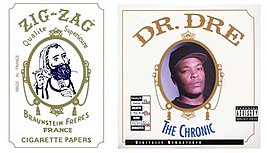
Birth of a New Genre
The wheels of Laid Back Hip Hop were well and truly in motion. Dr. Dre revolutionized the hip-hop sound with his signature G-funk style – which uses funk with an artificially altered tempo – distinguished by its lush Parliament-Funkadelic beats, soulful background vocals, and a fusion of live instruments like rolling basslines and whiny synths.
The G-funk, distinct sound is characterized by its electronic influences and is typically set at a tempo of 80 to 100 BPM. A stark contrast from its East Coast counterpart. But why is the G-funk sound so distinct? Well, it’s largely due to the prominence of DJing in the Southern California scene, as opposed to rapping. But hey, we’ll save that little tidbit of hip-hop history for another day.
For the next four years, mainstream hip-hop was heavily influenced by Dre’s innovative approach. While other acts, like The Bomb Squad, were all about that sample overload, Dre took a minimalist approach. He believed in using only one or a few samples per track, because, you know, why use 10 samples when one will do?
Recorded at Death Row records
The recording process, which took place at Death Row Studios in LA and Bernie Grundman Mastering in Hollywood, resulted in a hip-hop masterpiece that would shape the genre for decades to come.
Dre served as the album’s primary producer and auteur, which featured standout appearances from the likes of Snoop Dogg, Lady of Rage, and Kurupt, among others, “The Chronic” received widespread critical acclaim and cemented Dre’s status as a tastemaker and hip-hop luminary.
In short, the recording process for “The Chronic” was a masterclass in musical collaboration and a relentless pursuit of sonic originality.
The Lyrics
The defining G-funk style of West Coast hip-hop set it apart from the rival East Coast scene. With its relaxed, slow-tempo beats, G-funk embodied the laid-back attitude of Californian culture, in stark contrast to the fast-paced and aggressive attitudes of East Coast hip-hop (e.g. hardcore hip hop).
The lyrics covered themes such as sex, drug use (especially marijuana), love for the city, neighbourhood, friends, and leisurely themes. The flow of the rap was often slurred, with a “lazy” or “smooth” delivery, to enhance enunciation and keep in rhythmic sync.
The lyrics also sparked a fair bit of controversy for their sexist and violent themes, presenting a “frightening amalgam of inner-city street gangs” and “misogynist sexual politics and violent revenge scenarios”. The album targeted several members of N.W.A, with Eazy-E and Ice Cube dissed in the second single “Fuck Wit Dre Day” and MC Ren receiving a shout-out on the album’s intro. Dr. Dre’s diss of Eazy-E resulted in inflammatory lyrics aimed at offending his rival with homosexual implications, but was noted for its “spirited cleverness in the phrasing and rhymes”.
Snoop Dogg, who had a significant role on the album, was praised for his unique flow and lyrics. It was noted that his involvement was as vital to the album’s success as its production and that, “coupled with his inventive rhymes, Snoop’s distinctive style made him a superstar before he’d even released a recording of his own.” Touré of The New York Times highlights that while Snoop’s delivery was delicate, the content was far from it, drawing from his experiences of growing up poor, surrounded by violence, and serving time in jail. Snoop later commented on the realism of his lyrics, saying “My raps are incidents either I saw happen to one of my close homies or I know about it from just being in the ghetto. I can only rap about what I know, and that’s street life. It’s all everyday life, reality.”
The Singles
From the smooth grooves of “Let Me Ride” to the iconic swagger of “Nuthin’ but a G Thang,” The Chronic served up a bounty of bangers.
Nuthin’ But a G Thang
Released as the lead single, the single features American rapper Snoop Dogg. It features a sample from the 1970 song “I Want’a Do Something Freaky to You” by Leon Haywood, and two songs by James Brown, “Funky President (People It’s Bad)” and “The Payback”.
The song is built around these samples, which are used in different ways to create a funky, soulful musical backdrop for the lyrics. Dr. Dre is known for his ability to create new music by blending elements of various existing songs, and “Nuthin’ but a G Thang” is a great example of his production style and the use of samples to create new sounds.
“Nuthin’ But a G Thang” was a commercial success, peaking at #2 on the US Billboard Hot 100 and becoming one of the most recognizable tracks in the West Coast hip-hop genre, often regarded as one of the greatest hip-hop songs of all time.
Fuck wit Dre Day (And Everybody’s Celebratin’)
The second single released, the song features a diss towards Eazy-E, a former member of the hip-hop group N.W.A. and co-founder of Ruthless Records. “Fuck wit Dre Day” was a commercial success, reaching #8 on the US Billboard Hot 100 and becoming one of the most recognizable tracks in the West Coast hip-hop genre.
Fuck wit Dre Day (And Everybody’s Celebratin’)” uses several samples:“Funky President (People It’s Bad)” by James Brown, “I Get Lifted” by KC and the Sunshine Band, “Atomic Dog” by George Clinton, “More Bounce to the Ounce” by Zapp and“Super Freak” by Rick James
The song is noted for its use of humor, creative phrasing, and clever rhymes, as well as its controversial subject matter and the use of offensive language. The song remains one of Dr. Dre’s most popular and enduring tracks, and its impact can still be felt in the world of hip-hop today.
Let Me Ride
A classic example of the G-funk sound that Dre popularized, this single features a sample-based beat that incorporates several different musical elements to create a distinctive sound.
The song uses a sample of “Mothership Connection (Star Child)” by Parliament as the basis for its beat, with additional elements added to give it the signature G-funk sound. The song also features live instrumentation in the form of a groovy bassline, horns, and other musical elements, giving it a smooth, soulful feel.
Like many of Dr. Dre’s early works, “Let Me Ride” deals with themes of West Coast gangsta rap and the harsh realities of life in South Central Los Angeles, but it also has a more introspective and spiritual tone, reflecting Dr. Dre’s interest in the Nation of Islam and its teachings.
But, perhaps most notably, the album gave us this unapologetic anthem:
Btches Ain’t Sht
The song’s beat is based on a sample of “I Wanna Get Next to You” by Rose Royce and features a funky, G-funk style instrumental.
It is one of the more controversial songs on the album featuring Snoop Dogg, the track features explicit lyrics that use sexist language that objectifies women.
The lyrics focus on the idea that women are only useful for sex and materialistic pursuits, which is a perspective that has been widely criticized for perpetuating harmful gender stereotypes and contributing to a culture of misogyny.
Despite the backlash to the song’s lyrics, it remains one of Dr. Dre’s most well-known and recognizable tracks and has been widely imitated by other artists in the hip-hop genre. However, it’s important to note that the lyrics and themes of the song are not representative of all hip-hop music and are not condoned by many in the hip-hop community.
Well folks, if you needed any more proof of the impact “The Chronic” had on the hip-hop world, here it is. Last June, Rolling Stone placed the album on its 500 Greatest Albums of All-Time list, with the official statement being “redefined the West Coast Hip Hop sound”.
And if that wasn’t enough, the album was selected by the Library of Congress for preservation in the National Recording Registry in 2019. Can you believe it? “Culturally, historically, or aesthetically significant.” Who knew getting high and making music could be so historically significant?
So, let’s give it up for Dr. Dre and “The Chronic”, a true hip-hop classic that will always have a place in music history. And in our hearts, obviously.
